jewish
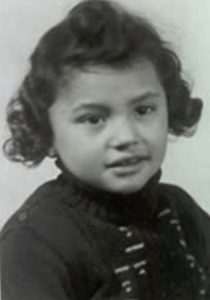 Yesterday, I had the unique opportunity to listen to a Holocaust survivor speak at a seminar. Her name was Inge Auerbacher, and she was an amazing woman. Inge was the last Jewish child born in Kippenheim, a village in South Western Germany located at the foot of the Black Forest. She was the only child of Berthold (1898–1987) and Regina Auerbacher (née Lauchheimer, 1905–1996). Both of her parents came from observant Jewish families who had lived for many generations in Germany. Her father proudly served in the German army, but when the Nazis came for them, his loyal service meant nothing to them. They were Jewish, and that fact condemned them to the concentration camps. Loyal service could not compensate for Hitler’s crazed hatred of the Jewish people.
Yesterday, I had the unique opportunity to listen to a Holocaust survivor speak at a seminar. Her name was Inge Auerbacher, and she was an amazing woman. Inge was the last Jewish child born in Kippenheim, a village in South Western Germany located at the foot of the Black Forest. She was the only child of Berthold (1898–1987) and Regina Auerbacher (née Lauchheimer, 1905–1996). Both of her parents came from observant Jewish families who had lived for many generations in Germany. Her father proudly served in the German army, but when the Nazis came for them, his loyal service meant nothing to them. They were Jewish, and that fact condemned them to the concentration camps. Loyal service could not compensate for Hitler’s crazed hatred of the Jewish people.
Inge had barely started school when her family as deported to Czechoslovakia and sentenced to the Terezin camp. When she and her parents went in, Inge was seven years old when she went into Terezin. She would be there for three years. I will not 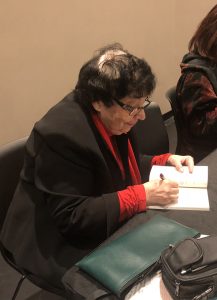 say she called it home for three years, because it was definitely not a home. Inge tells of the companions she always knew would be there…the rats, mice, fleas, and bed bugs. The prisoners were allowed two showers a year…yes, I said a year. No wonder those companions hung around. Another occasional companion was lice which meant shaved heads to make removal easier. All of this was horrible, but it was the least of the nightmare. The guards gave brutal beatings…especially the women guards. The scientists performed experiments on the people, and they were given very little to eat. They were doing everything they could to kill their prisoners. Nevertheless, it was all too slow for Hitler.
say she called it home for three years, because it was definitely not a home. Inge tells of the companions she always knew would be there…the rats, mice, fleas, and bed bugs. The prisoners were allowed two showers a year…yes, I said a year. No wonder those companions hung around. Another occasional companion was lice which meant shaved heads to make removal easier. All of this was horrible, but it was the least of the nightmare. The guards gave brutal beatings…especially the women guards. The scientists performed experiments on the people, and they were given very little to eat. They were doing everything they could to kill their prisoners. Nevertheless, it was all too slow for Hitler.
A total of 140,000 people were shipped to Theresienstadt concentration camp near Terezin; 88,000 were sent primarily to the gas chambers in Auschwitz, and 35,000 died of malnutrition and disease in Terezin. Of the 15,000 children imprisoned in 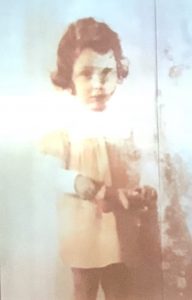 Terezin, Inge and her parents were among the 1% that survived. Her childhood friends, especially her best friend, Ruth lost her life at Auschwitz. Ruth’s father was half Christian and half Jewish. She was raised Christian, but it didn’t make a difference. She and her family were executed for their Jewish heritage. Poor Ruth was deported to Auschwitz in one of the last transports. Ruth and the other children marched with their parents to their final destination, not knowing what was to come. They were told they were going to the showers, but it was the gas chambers, and their parents would not tell them otherwise. It would have been far too cruel. For me, the picture that Inge found years later, of Ruth as a little girl, has stayed vividly in my mind. She was a sweet, innocent little girl, who had done nothing wrong, but her life was taken away from her because she was pat Jewish…because Hitler hated the Jewish people. Hate…an ugly word. Inge says that this type of treatment happens when people lose their humanity. She would tell you, “Never lose your humanity.”
Terezin, Inge and her parents were among the 1% that survived. Her childhood friends, especially her best friend, Ruth lost her life at Auschwitz. Ruth’s father was half Christian and half Jewish. She was raised Christian, but it didn’t make a difference. She and her family were executed for their Jewish heritage. Poor Ruth was deported to Auschwitz in one of the last transports. Ruth and the other children marched with their parents to their final destination, not knowing what was to come. They were told they were going to the showers, but it was the gas chambers, and their parents would not tell them otherwise. It would have been far too cruel. For me, the picture that Inge found years later, of Ruth as a little girl, has stayed vividly in my mind. She was a sweet, innocent little girl, who had done nothing wrong, but her life was taken away from her because she was pat Jewish…because Hitler hated the Jewish people. Hate…an ugly word. Inge says that this type of treatment happens when people lose their humanity. She would tell you, “Never lose your humanity.”
 Many people think of Kindergarten as almost a play date. They think of a classroom filled with toys, books, and craft supplies, as well as a playground for recess. Many people think of it as a daycare for working parents, and of course, a place for early childhood development. All these are good things, but this was not the original plan for the creator of Kindergarten, German born Friedrich Wilhelm August Fröbel. He wanted it to be a place that was both ‘a garden for children’, where children meet with environment and also ‘a garden of children’, where they play together and express themselves in a smaller garden world by means of play with their age group. He believed that “children are like tiny flowers; they are varied and need care, but each is beautiful alone and glorious when seen in the community of peers.”
Many people think of Kindergarten as almost a play date. They think of a classroom filled with toys, books, and craft supplies, as well as a playground for recess. Many people think of it as a daycare for working parents, and of course, a place for early childhood development. All these are good things, but this was not the original plan for the creator of Kindergarten, German born Friedrich Wilhelm August Fröbel. He wanted it to be a place that was both ‘a garden for children’, where children meet with environment and also ‘a garden of children’, where they play together and express themselves in a smaller garden world by means of play with their age group. He believed that “children are like tiny flowers; they are varied and need care, but each is beautiful alone and glorious when seen in the community of peers.”
I’m sure this sounds odd to most of us, but when you look at his background, I think you will understand why he felt the way he did. Fröbel had an unhappy childhood with a severe step-mother. He was abandoned and treated in a strict fashion as a child. He got to know what happiness was, when he was living with his uncle’s family while studying at high school. He had a huge desire for education, strong Christian faith and love of nature. He studied mineralogy in Jena,  Germany and architecture at the Berlin’s Humboldt University. Inborn skills of an educator helped Fröbel to realize the failure of teaching system because of its incompleteness and the failure to include the outside world in the educational process. The first kindergarten was established by Fröbel in Bad Blankenburg in 1837. He renamed his Play and Activity Institute to a ‘kindergarten’ two years later in 1840. That Bad Blankenburg Infant school used play, games, songs, stories, and crafts to encourage children’s imagination and broaden their physical and motor skills. “Kommt, lasst uns unsern Kindern leben” Come, let us live with our children’ turned into the catchphrase of the early childhood education.
Germany and architecture at the Berlin’s Humboldt University. Inborn skills of an educator helped Fröbel to realize the failure of teaching system because of its incompleteness and the failure to include the outside world in the educational process. The first kindergarten was established by Fröbel in Bad Blankenburg in 1837. He renamed his Play and Activity Institute to a ‘kindergarten’ two years later in 1840. That Bad Blankenburg Infant school used play, games, songs, stories, and crafts to encourage children’s imagination and broaden their physical and motor skills. “Kommt, lasst uns unsern Kindern leben” Come, let us live with our children’ turned into the catchphrase of the early childhood education.
Friedrich Fröbel also used studying and nurturing plants in a garden for stimulating children’s interest in the natural world. In reality, we can trace the similarities to the Montessori school system and the Pestalozzian consideration of importance to grow up in harmony with nature. Fröbel paid much attention to preparing for  further school education by training the children through the complimentary self expression, creativeness, collective involvement, and motor activity. He considered training of all the vivid faculties: artistic, imaginative, linguistic, arithmetical, musical, aesthetic, scientific, physical, social, moral, cultural, and spiritual, complete growth and harmonious development to be even more important than any kind of knowledge. Fröbel’s kindergarten system flourished globally. Most kindergartens were organized for children of all social classes, ethnic groups and religious believes, Jewish as well as Christian. Fröbel’s vision of kindergarten seems to be so familiar and proper, however it was a fresh and revolutionary look on early childhood education in his time.
further school education by training the children through the complimentary self expression, creativeness, collective involvement, and motor activity. He considered training of all the vivid faculties: artistic, imaginative, linguistic, arithmetical, musical, aesthetic, scientific, physical, social, moral, cultural, and spiritual, complete growth and harmonious development to be even more important than any kind of knowledge. Fröbel’s kindergarten system flourished globally. Most kindergartens were organized for children of all social classes, ethnic groups and religious believes, Jewish as well as Christian. Fröbel’s vision of kindergarten seems to be so familiar and proper, however it was a fresh and revolutionary look on early childhood education in his time.
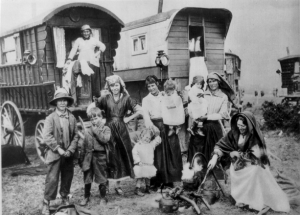 When we think of the horrors of the Holocaust, we think of millions of Jewish people who were murdered because they were Jewish. The horrible things Hitler did are so awful, that most of us can hardly bare to think about it at all. It is uncertain just when the Holocaust began, but the accepted date is January 30, 1933. That date is when Adolf Hitler was appointed German chancellor, setting in motion what would become the Nazi genocide against the Jews. On September 15, 1935, the Nuremberg Laws were enacted. The Nuremberg Laws were anti-Jewish statutes enacted by Germany, that were a major step in clarifying racial policy and removing Jewish influences from Aryan society. These laws, were the foundation on which the rest of Nazi racial policy hung.
When we think of the horrors of the Holocaust, we think of millions of Jewish people who were murdered because they were Jewish. The horrible things Hitler did are so awful, that most of us can hardly bare to think about it at all. It is uncertain just when the Holocaust began, but the accepted date is January 30, 1933. That date is when Adolf Hitler was appointed German chancellor, setting in motion what would become the Nazi genocide against the Jews. On September 15, 1935, the Nuremberg Laws were enacted. The Nuremberg Laws were anti-Jewish statutes enacted by Germany, that were a major step in clarifying racial policy and removing Jewish influences from Aryan society. These laws, were the foundation on which the rest of Nazi racial policy hung.
The Jewish people were not the only group of people who came to the attention of Hitler’s insane mind either. Under the rule of Adolf Hitler, a supplementary decree to the Nuremberg Laws was issued on November 26, 1935, defining Gypsies as “enemies of the race-based state”, the same category as Jews. The Nuremberg racial 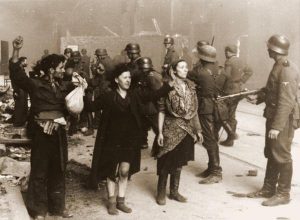 laws of September 15, 1935, “Law for the Protection of German Blood and Honor” and “Reich Citizenship Law” did not explicitly mention Gypsies, but in commentaries interpreting these laws, “Gypsies were included, along with Jews and Negros, as racially distinctive minorities with alien blood. As such, their marriage to Aryans was prohibited.” Like the Jews, the Gypsies were also deprived of their civil rights. Hitler viewed Jews and Gypsies as a defective race, in fact he viewed all non-white people as defective. I suppose this view was what originally justified Hitler’s brutal murder of 6 million Jews and who knows how many people of other races. On this day, November 15, 1943, Heinrich Himmler, who was the Reichsführer of the Schutzstaffel (Protection Squadron, or SS), and a leading member of the Nazi Party (NSDAP) of Nazi Germany ordered that Gypsies and those of mixed Gypsy blood are to be put on “the same level as Jews and placed in concentration camps.”
laws of September 15, 1935, “Law for the Protection of German Blood and Honor” and “Reich Citizenship Law” did not explicitly mention Gypsies, but in commentaries interpreting these laws, “Gypsies were included, along with Jews and Negros, as racially distinctive minorities with alien blood. As such, their marriage to Aryans was prohibited.” Like the Jews, the Gypsies were also deprived of their civil rights. Hitler viewed Jews and Gypsies as a defective race, in fact he viewed all non-white people as defective. I suppose this view was what originally justified Hitler’s brutal murder of 6 million Jews and who knows how many people of other races. On this day, November 15, 1943, Heinrich Himmler, who was the Reichsführer of the Schutzstaffel (Protection Squadron, or SS), and a leading member of the Nazi Party (NSDAP) of Nazi Germany ordered that Gypsies and those of mixed Gypsy blood are to be put on “the same level as Jews and placed in concentration camps.”
Hitler’s decision to include the Gypsies, and the ensuing murders of up to 500,000 Romani Gypsies, became known as the Romani Holocaust, or Porajmos, which means cutting, fragmentation, or destruction; or  Samudaripen, which means mass killing. It was Nazi Germany and its allies planned and attempted effort to exterminate the Romani Gypsy people of Europe. Some historians put the death toll as high as 1.5 million. In 1982, West Germany formally recognized that genocide had been committed against the Romani. In 2011 the Polish Government passed a resolution for the official recognition of August 2nd as a day of commemoration of the genocide. As I was researching this horrific genocide, I began to wonder how it was that I had never heard about it before. Was I living under a rock? In reality, I doubt if it was in any of the history books of my time, because no one admitted that it happened until 1982, at the earliest.
Samudaripen, which means mass killing. It was Nazi Germany and its allies planned and attempted effort to exterminate the Romani Gypsy people of Europe. Some historians put the death toll as high as 1.5 million. In 1982, West Germany formally recognized that genocide had been committed against the Romani. In 2011 the Polish Government passed a resolution for the official recognition of August 2nd as a day of commemoration of the genocide. As I was researching this horrific genocide, I began to wonder how it was that I had never heard about it before. Was I living under a rock? In reality, I doubt if it was in any of the history books of my time, because no one admitted that it happened until 1982, at the earliest.
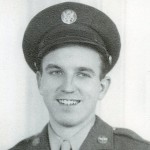 When the United States entered World War II, after the attack on Pearl Harbor, we were a nation with a score to settle. The Japanese had killed our people, and we vowed to make them pay. In addition to that, the Nazis were killing the Jewish people, and they had to be stopped. Their cruel killing of so many people in their gas chambers could not be tolerated. Revenge against the Japanese would have to wait for now, because the Nazi cruelty could no longer be kept hidden.
When the United States entered World War II, after the attack on Pearl Harbor, we were a nation with a score to settle. The Japanese had killed our people, and we vowed to make them pay. In addition to that, the Nazis were killing the Jewish people, and they had to be stopped. Their cruel killing of so many people in their gas chambers could not be tolerated. Revenge against the Japanese would have to wait for now, because the Nazi cruelty could no longer be kept hidden.
On of the biggest battles fought on German soil was the Battle of Berlin. It was fought over the course of a couple of years, and Britain’s Royal Air Force had been badly beaten by the Germans. Then when the United States joined in, things began to take a  turn for the better. On May 7, 1944, the United States 8th Air Force sent 1500 bombers in to attack Berlin. More were sent the next day. The headlines were exuberant. Headlines like Berlin “Condemned to Death”, U.S. Planes Blast Berlin Twice, Capital Lies In Stark Ruins, and Berlin Again Plastered By Yank Fliers, were splattered across the papers. It was the ultimate attack on the heart of Nazi Germany from the Mighty 8th Air Force. I think everyone knew that Hitler’s days in power were numbered. It was true. The Nazis surrendered unconditionally a year later.
turn for the better. On May 7, 1944, the United States 8th Air Force sent 1500 bombers in to attack Berlin. More were sent the next day. The headlines were exuberant. Headlines like Berlin “Condemned to Death”, U.S. Planes Blast Berlin Twice, Capital Lies In Stark Ruins, and Berlin Again Plastered By Yank Fliers, were splattered across the papers. It was the ultimate attack on the heart of Nazi Germany from the Mighty 8th Air Force. I think everyone knew that Hitler’s days in power were numbered. It was true. The Nazis surrendered unconditionally a year later.
My dad was a Top Turret Gunner and Flight Engineer on a B-17G Bomber at this time, and while I don’t know if Dad took part in this attack, I can say that it is entirely possible. My dad didn’t talk about his war days much…most men from that era didn’t. I  have to think that it was hard to remember those missions, because no matter how distanced you were from your target, you were still very aware that people were dying because of the bombs you were dropping. Sure, they were the enemy, and you were doing your job, but the were also humans. I think, if it were me, I would rather have to kill in the way my dad did…not looking into the eyes of the person you are about to kill, and in some attacks, the people didn’t have any idea that they were about to die. They, like my dad, were just doing their jobs. Still, they were soldiers under a cruel dictator, with no choice but to obey orders. Nevertheless, sad as it was for those people to die, I am very proud of my dad’s service. And if he was in this battle, then I am proud of that too.
have to think that it was hard to remember those missions, because no matter how distanced you were from your target, you were still very aware that people were dying because of the bombs you were dropping. Sure, they were the enemy, and you were doing your job, but the were also humans. I think, if it were me, I would rather have to kill in the way my dad did…not looking into the eyes of the person you are about to kill, and in some attacks, the people didn’t have any idea that they were about to die. They, like my dad, were just doing their jobs. Still, they were soldiers under a cruel dictator, with no choice but to obey orders. Nevertheless, sad as it was for those people to die, I am very proud of my dad’s service. And if he was in this battle, then I am proud of that too.
 When we look at the reasons that the United States entered World War II, we think of the Japanese attack on Pearl Harbor, and we would be correct, but there was another dictator who committed so many atrocities during and before World War II, that it seems to me inevitable that we would have had to make that decision sooner or later. Adolf Hitler was a German politician, the leader of the Nazi Party, elected Chancellor of Germany from 1933 to 1945, and Führer, or leader of Nazi Germany from 1934 to 1945. One of his worst acts as Führer of Nazi Germany, was when he initiated World War II in Europe with the invasion of Poland in September 1939 and the worst act was, of course, the Holocaust.
When we look at the reasons that the United States entered World War II, we think of the Japanese attack on Pearl Harbor, and we would be correct, but there was another dictator who committed so many atrocities during and before World War II, that it seems to me inevitable that we would have had to make that decision sooner or later. Adolf Hitler was a German politician, the leader of the Nazi Party, elected Chancellor of Germany from 1933 to 1945, and Führer, or leader of Nazi Germany from 1934 to 1945. One of his worst acts as Führer of Nazi Germany, was when he initiated World War II in Europe with the invasion of Poland in September 1939 and the worst act was, of course, the Holocaust.
During the Holocaust, an insane Hitler, decided that the Jewish people were Untermenschen, or sub-human and socially undesirable, and determined in his heart to kill them. His first move in that direction was to begin rounding them up and placing them in prison camps. And one of the worst was Auschwitz. For a time, Hitler only placed the men in Auschwitz, but then on March 26, 1942, the first women prisoners arrived at Auschwitz.  Of course, Hitler’s intent was always to put the prisoners to death, but he decided to use them in whatever capacity he felt necessary and useful, before the time came to kill them. Since he considered the sub-human, he felt no guilt making them slaves. The prisoners were forced to work long hours, and were also used for medical experimentation. When the prisoners entered the camp, they were strip searched, male and female alike, and forced to stand naked in front of the guards during that time. It didn’t matter how cold they were. They did not count in the eyes of the Germans, because they were Untermenschen…sub-human. As a woman, I can only imagine how these first female prisoners must have felt. They were already very much aware that the Germans did not respect their race, so why would they feel differently about the fact that they were women. It would have been a very scary time. I’m sure they did not know if they would be raped and then killed, or what would happen to them. Their entry into the prison camp had already proven that they were nothing in the eyes of their captors.
Of course, Hitler’s intent was always to put the prisoners to death, but he decided to use them in whatever capacity he felt necessary and useful, before the time came to kill them. Since he considered the sub-human, he felt no guilt making them slaves. The prisoners were forced to work long hours, and were also used for medical experimentation. When the prisoners entered the camp, they were strip searched, male and female alike, and forced to stand naked in front of the guards during that time. It didn’t matter how cold they were. They did not count in the eyes of the Germans, because they were Untermenschen…sub-human. As a woman, I can only imagine how these first female prisoners must have felt. They were already very much aware that the Germans did not respect their race, so why would they feel differently about the fact that they were women. It would have been a very scary time. I’m sure they did not know if they would be raped and then killed, or what would happen to them. Their entry into the prison camp had already proven that they were nothing in the eyes of their captors.
 Between 1939 and 1945, there were many plans to try to assassinate Hitler. The most well known, Operation Valkyrie, which came from within Germany and was at least partly driven by the increasing prospect of a German defeat in the war. On July 20, 1944, Claus von Stauffenberg planted a bomb in one of Hitler’s headquarters…known as the Wolf’s Lair at Rustenburg. Hitler survived because staff officer Heinz Brandt moved the briefcase containing the bomb behind a leg of the heavy conference table. When the bomb exploded, the table deflected much of the blast. Later, Hitler ordered savage reprisals resulting in the execution of more than 4,900 people. In the end, he would take his own life, in an effort not to be taken alive. Not a bad thing if you ask me, because the world is truly well rid of him.
Between 1939 and 1945, there were many plans to try to assassinate Hitler. The most well known, Operation Valkyrie, which came from within Germany and was at least partly driven by the increasing prospect of a German defeat in the war. On July 20, 1944, Claus von Stauffenberg planted a bomb in one of Hitler’s headquarters…known as the Wolf’s Lair at Rustenburg. Hitler survived because staff officer Heinz Brandt moved the briefcase containing the bomb behind a leg of the heavy conference table. When the bomb exploded, the table deflected much of the blast. Later, Hitler ordered savage reprisals resulting in the execution of more than 4,900 people. In the end, he would take his own life, in an effort not to be taken alive. Not a bad thing if you ask me, because the world is truly well rid of him.
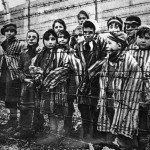 Many of the history books of today try to remove or minimize the Holocaust, and some people don’t even believe that it was real, but that couldn’t be further from the truth. The Holocaust took place between 1941 and 1945. In 1933, the Nazis came into power in Germany and they believed that the Germans were a superior race. They were completely against any people of different backgrounds…especially the Jewish people, who they felt were an inferior race, and were a danger to the German Racial Community. During the Holocaust, the Jewish people were systematicaly removed from their homes, made to be slaves, used for scientific experiments, and many died or were killed in the Gas Chambers.
Many of the history books of today try to remove or minimize the Holocaust, and some people don’t even believe that it was real, but that couldn’t be further from the truth. The Holocaust took place between 1941 and 1945. In 1933, the Nazis came into power in Germany and they believed that the Germans were a superior race. They were completely against any people of different backgrounds…especially the Jewish people, who they felt were an inferior race, and were a danger to the German Racial Community. During the Holocaust, the Jewish people were systematicaly removed from their homes, made to be slaves, used for scientific experiments, and many died or were killed in the Gas Chambers.
On this day in 1942, a stunning 4,300 Jews are deported from the Polish town of Chelm to the Nazi extermination camp at Sobibor, where all are gassed to death. Between 1942 and 1943, there were about 250,000 Jewish prisoners who lost their lives in the five gas chambers housed there. Then in October 1943, a 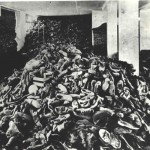 camp revolt occurred…300 Jewish slave laborers rose up and killed several members of the SS…Schutzstaffel (German translation: “Protective Echelon), as well as Ukrainian guards. The rebels were killed as the battled against the guards or tried to escape. The remaining prisoners were executed the very next day. I can’t even begin to imagine what incredible bravery it took to even make such an attempt. They had no weapons with which to engage in a battle. They were simply fighting for their lives, knowing that they would most likely lose. It was better to fight and die, than to live this way.
camp revolt occurred…300 Jewish slave laborers rose up and killed several members of the SS…Schutzstaffel (German translation: “Protective Echelon), as well as Ukrainian guards. The rebels were killed as the battled against the guards or tried to escape. The remaining prisoners were executed the very next day. I can’t even begin to imagine what incredible bravery it took to even make such an attempt. They had no weapons with which to engage in a battle. They were simply fighting for their lives, knowing that they would most likely lose. It was better to fight and die, than to live this way.
Also on this day, the German firm IG Farbe set up a factory just outside Aushwitz in order to take full advantage of the Jewish slave laborers from the Auschwitz concentration camps. IG Farben was a German chemical industry conglomerate. Its name is taken from Interessen-Gemeinschaft Farbenindustrie AktienGesellschaft which literally means “community of interests” of, in this case dye-making corporations. In addition to exploiting the Jewish slave labor for its oil and rubber production, IG Farben performed drug experiments on the slaves. Tens of  thousands of the slaves would lose their lives to the brutal work conditions and savage treatment received from the guards. In the aftermath, several of the firm’s officials would be convicted of plunder, spoilage of property, forced slave labor, and inhumane treatment of civilians and prisoners of war. The firm went under Allied control for the purpose of completely dismantling it, because it was a threat, but as resolve weakened, the firm was eventually divided into three companies, Hoechst…a chemical and pharmaceutical company, Bayer…a company we all know, and BASF…Badische Anilin und Soda Fabrik, also a chemical company. I suppose that one could say that in the end, some good came from these companies, but knowing their history tends to make it a little difficult to get past their origin, or their complete and total disregard for human life in the past.
thousands of the slaves would lose their lives to the brutal work conditions and savage treatment received from the guards. In the aftermath, several of the firm’s officials would be convicted of plunder, spoilage of property, forced slave labor, and inhumane treatment of civilians and prisoners of war. The firm went under Allied control for the purpose of completely dismantling it, because it was a threat, but as resolve weakened, the firm was eventually divided into three companies, Hoechst…a chemical and pharmaceutical company, Bayer…a company we all know, and BASF…Badische Anilin und Soda Fabrik, also a chemical company. I suppose that one could say that in the end, some good came from these companies, but knowing their history tends to make it a little difficult to get past their origin, or their complete and total disregard for human life in the past.

